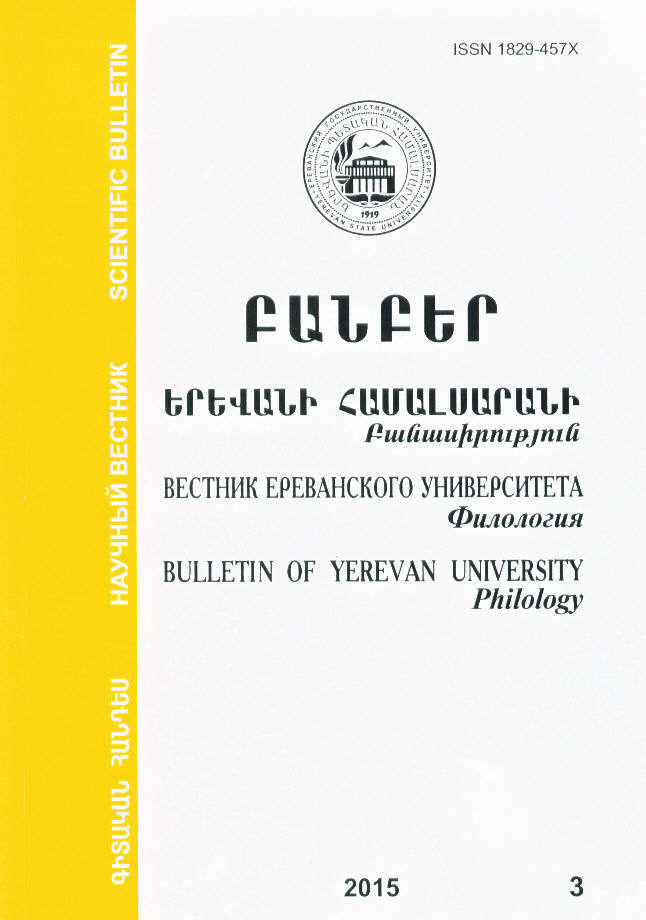Prosodic Features of Spoken Utterances in Armenian
DOI:
https://doi.org/10.46991/BYSU:B/2015.6.3.060Keywords:
prosodic morphology, derivation, rhythmic patterns, iambic foot, language acquisition, universal/language-specific rules, syllable structure, sonority, legality, phonotacticsAbstract
Certain metrical patterns attested in native Armenian spoken utterances are usually labelled as unacceptable in adult standardized speech (ira cf. ir ‘his/her’,incha? cf. inch? ‘what?’, mezi cf. mez ‘us’, etc.) or strange/unaccountable in child
language (“Harik senak mət tse” (Tigran 1.2) cf. “Hairiki seniak ʧem mətel”-’I haven’t entered daddy’s study’). Unfortunately, authentic spoken utterances have not been seriously addressed in Armenian linguistic studies, though as compared to the socalled ‘literary’ (standardized and to some extent artificial) speech, naturally spoken utterances often reveal crucial information about the structure of a language or language in general. The present analysis accounts for certain monosyllabic structures surfacing consistently as bisyllabic (C)V.C□′ by adding an obligatory nucleus constituent to the final onset - mez→me.zi ‘us’, ir→i.ra ‘his/her’. This reality suggests that the occurrence of augmented units in surface representations is directly dependent on certain phonological processes, those that secure Foot Binarity in prosodic structures to satisfy UG or/and language specific well-formedness conditions for metrical representations.
Downloads
Published
How to Cite
Issue
Section
License
Copyright (c) 2021 Bulletin of Yerevan University

This work is licensed under a Creative Commons Attribution-NonCommercial 4.0 International License.

